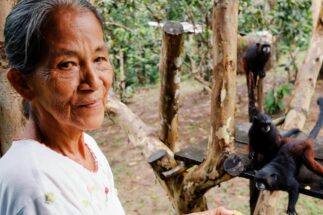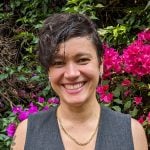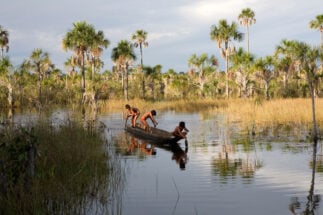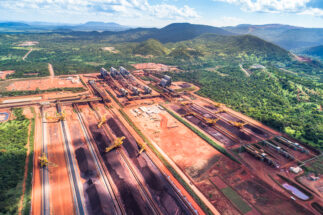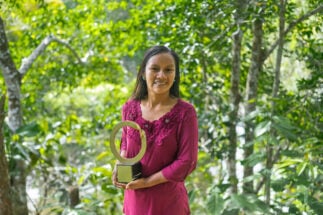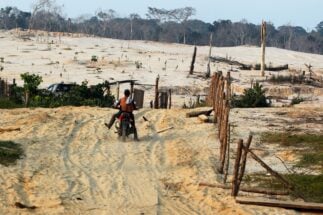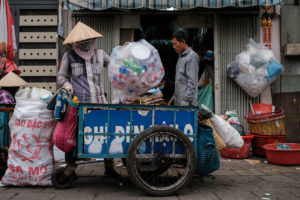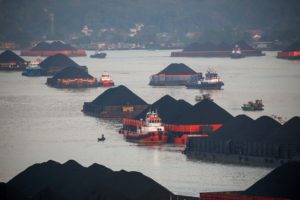Martín von Hildebrand has dedicated his last 50 years to the defence of indigenous peoples’ rights and the conservation of tropical forest.
In 1972, he moved to the Colombian Amazon to live with the Ticuna indigenous people to learn about their worldview and methods of conservation – and he stayed. Von Hildebrand has also worked with the Tanimuka and Letuama peoples. In 1990, he created the Gaia Amazonas Foundation and the COAMA (Amazon Consolidation) programme that promotes the formation of indigenous governments. He subsequently supported efforts to shape laws on indigenous rights within the Colombian interior ministry.
His work has earned him widespread recognition. He received Colombia’s National Environmental Award in 1999, the Swedish Right Livelihood Award in 1999, the Skoll Foundation Social Entrepreneur Award in 2009, and the World Economic Forum Social Entrepreneur Award in 2009.
Von Hildebrand currently coordinates the Andes Amazon Atlantic Corridor initiative, which aims to connect northern Amazon communities across national borders, forming a territory with a stronger capacity to protect its biodiversity and indigenous cultures. He spoke with Diálogo Chino about the Amazon corridor initiative, indigenous prophecies of climate change, and the fundamental role that the rainforest plays for the future of the planet.
Diálogo Chino: What is the global value of the Amazon and what role do indigenous people play?
Martin von Hildebrand: The Amazon is a living and self-regulating organism. The planet is also an organism but it is a system and everything is interdependent and everything is alive. Many have compared it to the lung of the world, but I would say it is the heart. It plays an essential role in the water cycle. It pumps a water from tropical forests and pumps moisture that contributes to the entire water cycle. If we don’t have the trees, we don’t have the flying rivers, and this is the water upon which all the Andes up to the Río de la Plata basin rely. If we lose the trees we run out of water.
Now we are seeing that there are much more intense droughts due to deforestation and carbon sequestration is now in trouble because too much carbon is being emitted and the Amazon is no longer sequestering as it used to. Forests can adapt to changes in temperatures naturally but as climate change dries out the forest, more can be burned. In addition, with the current [levels of] deforestation, it worsens with climate change. We don’t know precisely what’s going on because it’s much more complex than scientists can calculate.
They say that there were five worlds before us. And the beings that occupied these worlds were aggressive or selfish beings.
Indigenous people have different concepts of human beings and their relationship with nature. The indigenous people have been in the Amazon for 10,000 years. For all those years, instead of focusing on owning nature, they have focused on thinking that they are part of nature and it is the great community of which they are a part. They have observed how the system works.
To reach that knowledge implies reaching a state of identifying with the forest, reaching a state of intimacy. A shaman once told me: ‘Martín, when I learned shamanism, I would sit and look at a tree until I turned into a tree.’ I told him I believe that the indigenous conscience is based on this intimacy. ‘Martín, if there is no intimacy, how do you get to spirituality?’ [the shaman asked]. There is a vital energy that flows that is deeply linked with the life of the jungle. The indigenous take care of nature because it is part of them. And, in turn, harming it is harming themselves.
How do indigenous groups interpret climate change and what can we learn from their vision?
They say that it is the factories that generate pollution and they have seen deforestation, or they see the mercury in the river. This is offending and killing nature. They see Covid as part of the change. Nature has to defend itself against so many threats. A shaman explained to me that this discussion of climate change existed in his myths from long ago. He said that they had already prophesised that culture was going to end.
They say that there were five worlds before us. And the beings that occupied these worlds were aggressive or selfish beings. They wanted everything for themselves and did not want to share. Those worlds ended due to fires and floods, and this one is also going to end and other beings are going to arrive. Before, there were other ecosystems and they are changing. They say that this ends with disorder. We are not respecting this natural order, that the energies that create life in our world will change, it will turn around and another world will come for other beings. There is climate chaos and they associate it with the impact of the Western world. There are other things that they see happening to them today. For example, at times the pigs come out and eat their orchards because the fruits of the jungle have not ripened because the climate is no longer the same.
What is the Amazon Corridor and what is its purpose?
What the corridor seeks is to maintain the ecosystem connectivity of the Andes to the Atlantic Ocean, crossing the entire northern Amazon basin to protect the entire area. This includes part of the Amazon of Brazil, Ecuador, Peru, Colombia, Venezuela, Guiana, Suriname and French Guiana. They are 260 million hectares or 30% of the Amazon biome. Of this area, 20% is deforested and needs to be restored, and 80% is in good condition. Of the totality, 65% is under some form of protection and there is 15% that remains to be protected.
But when you have isolated protected areas, they don’t survive in the long term. Connectivity is important because of tropical convergence zones, where clouds and sky meet. The Amazon is where the water and rain are most concentrated. From Ecuador, there we have the most important flying river, which goes down the entire Andean zone to the Río de la Plata basin, and the entire economy depends on it.
There are other clouds coming down to the south, but the deforestation of the south has already damaged their flying rivers. So what needs to be done to protect this area? As a whole, we must move forward and achieve ecosystemic and social connectivity. One of the great weaknesses is that there are no agreed standards for sustainable management and there is no comprehensive political or legal vision.
Did you know…?
In 1991, Colombia became the first South American country to ratify ILO convention 169 and only the second in Latin America after Mexico, which the accord in 1990
It is also necessary to interconnect with companies and also with governments, NGOs and others. We are moving forward and coordinating, each at their own pace. What we seek is to maintain the forest, maintain resilience, the water cycle, because if we do not maintain it, the loss is phenomenal. One point I want to highlight is that it is important that we take indigenous people and their culture seriously, and allow them into decision-making spaces. One often sees how at the international level, indigenous people are not consulted because they are considered primitive. But we have to attribute importance to their vision, we have to strengthen it. We must be careful that we are not integrating them into individualism because their knowledge is a treasure. We must maintain it and they cannot be excluded. They must be valued, they must be taken seriously. They talk about another way of being human – that is fundamental.
You have been fighting for the rights of indigenous people for decades and you promoted legislation that supports their struggle. Has ILO convention 169, which sought to protect these groups, helped?
In the eighties I had the opportunity to enter the government: the Ministry of Education and then the Presidency, and we managed to promote all the laws to recognise indigenous rights to land. The result: at the end of the eighties we participated in the definition and drafting of ILO Convention No. 169 [Convention No. 169 of the International Labour Organisation] and achieved its ratification in Colombia.
It was a fundamental contribution to the territories – that their culture be recognised and the rights were considered the same. Before, the international and national vision was integrationist, which means that it sought to unite indigenous people and make them like everyone else. This completely changed the framework and valued their culture in their own right.
But the indigenous people wanted something more extreme. However, more extreme measures are not binding. Currently, if the Convention is not complied with, a complaint can be filed with the International Labour Organisation (ILO) in Geneva and the country can be sanctioned. They can even remove it from the ILO. So it has been very important in the development of indigenous rights. We want them to be more autonomous in decisions so that they aren’t imposed on them. When there is something that affects their cultures and their territories, they can decide on it.
